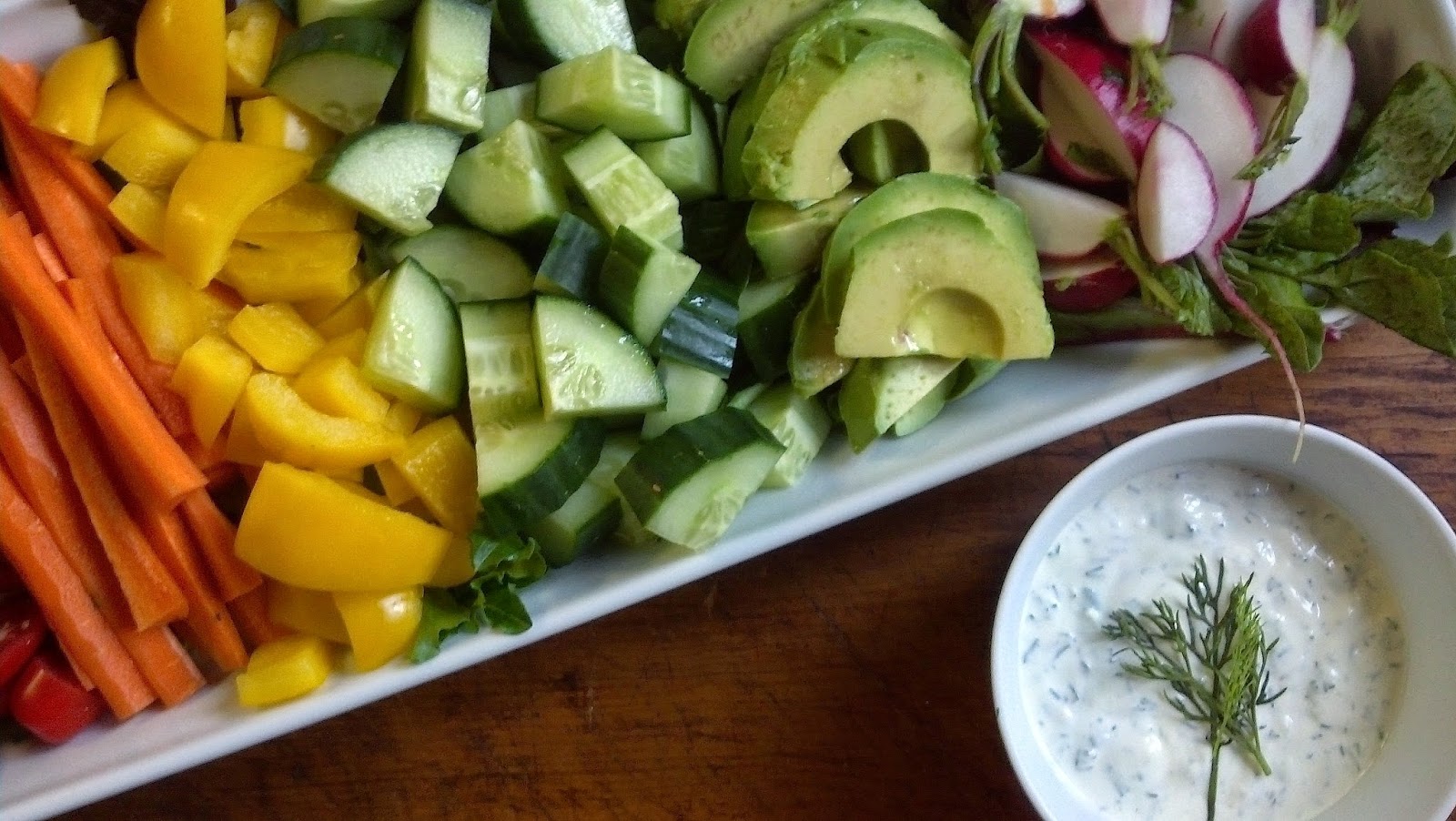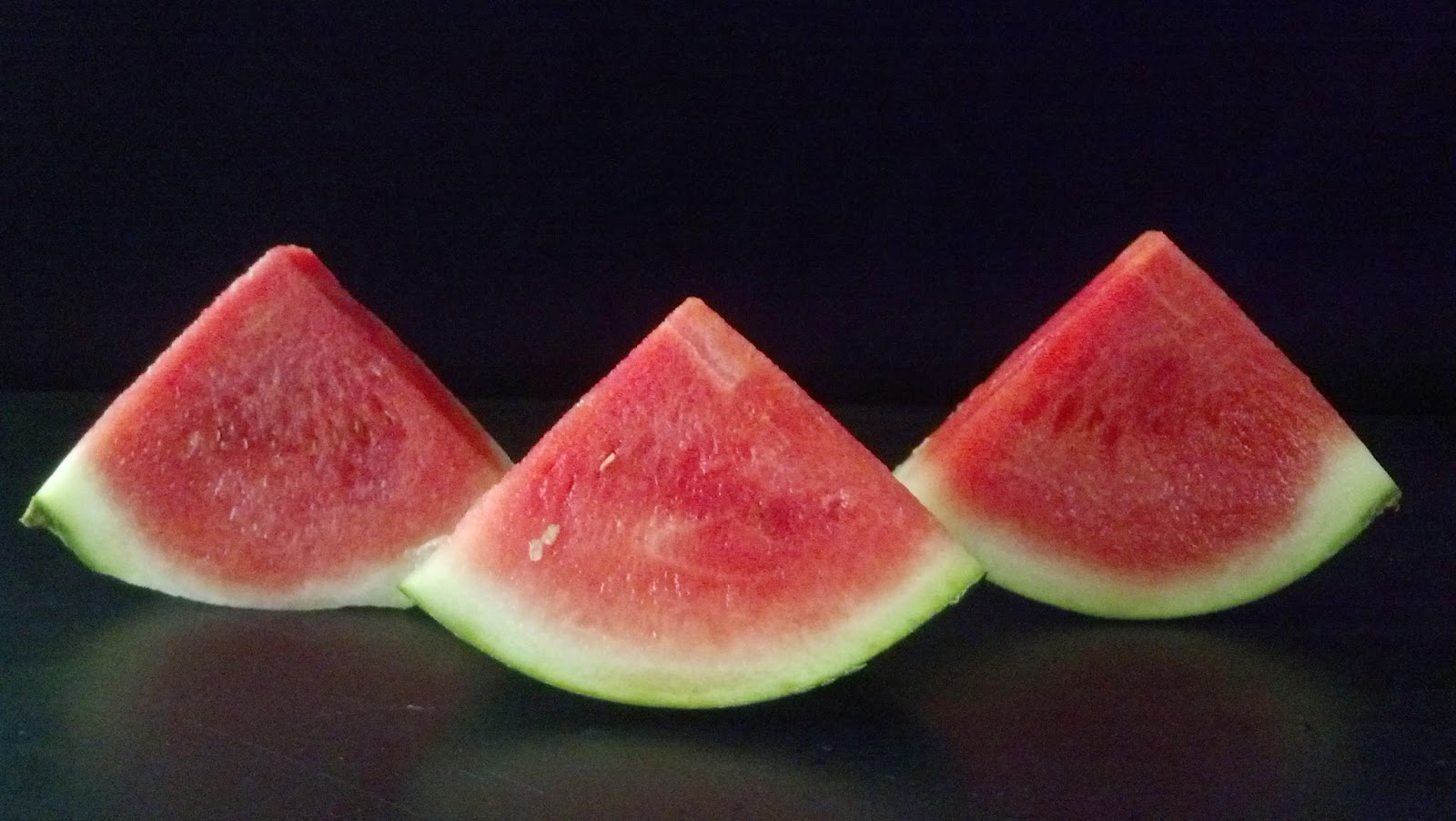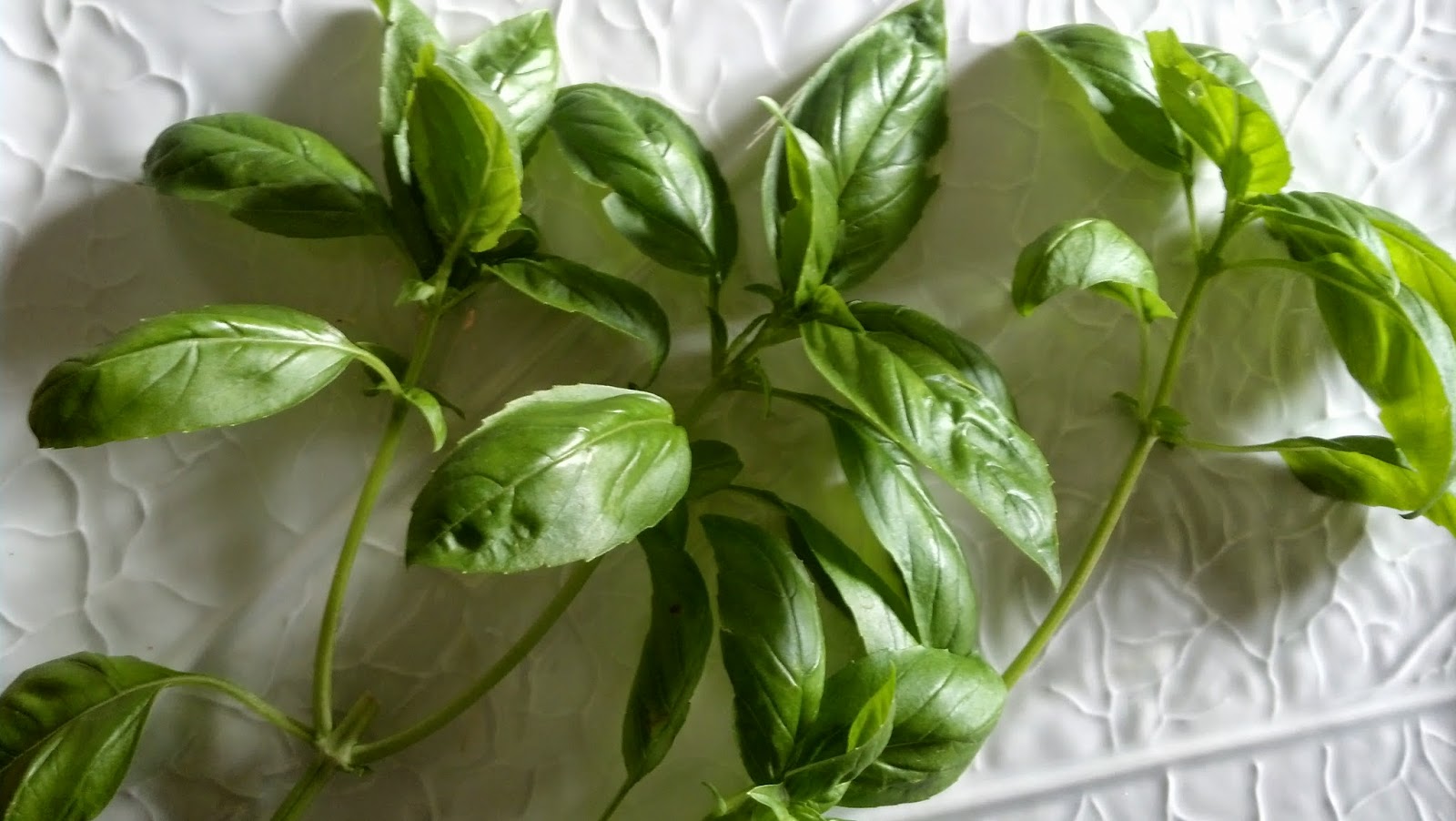When walking through Farmer's Markets, I am usually drawn to those stands where the fruits and vegetables are artfully arranged, in a way mimicking a rainbow. Being someone with rather monochromatic tastes, I was inspired this weekend to shift from making the same old, same old (dominated by green) salad to making one having the characteristics of a rainbow. After putting this 'deconstructed' salad together, I was awestruck by how much more beautiful, how much more appetizing a salad could be. With some degree of certainty, this summer salad will have me going from one salad 'rut' to another.
In concept, I might be headed in a new salad 'rut' direction. However, this summer salad is one that doesn't necessarily have to be the same each time it is made. The choices for vegetables, while not endless, can change based on personal preference as well as what is in season. Whether I continue to replicate this salad using the same seven vegetables or not, one thing is for certain. My weekly trip to the Farmer's Market this summer has just gotten a little more exciting.
The greens base for this salad was a spring mix, but it could be arugula, spinach, romaine, or any combination of greens you like. Notice I haven't jumped on the kale bandwagon yet.
My first time making this summer salad, I choose cherry tomatoes, yellow bell peppers, carrots, english cucumbers, avocado and radishes. As long as I can find ripe avocados and english cucumbers, these will most likely be two things I will keep constant as they are my personal favorites.
But it is a salad that can include more than vegetables. If I was serving this salad as a main course for lunch or dinner, I might add a row of cooked shrimp, lobster meat or lump crab meat to it.
The creamy dill dressing on the side compliments this salad perfectly. Mayonnaise, sour cream, horseradish, fresh lemon juice, fresh dill, minced garlic, salt and pepper create a thick, creamy dressing. I think, no I know, my champagne vinaigrette 'rut' will be replaced by a creamy dill dressing one. Seriously, this dressing is insanely delicious. Already I am feeling anxious I will not be able to make this dressing year round as the fresh dill available in the summer isn't the same as what is sold here in the late fall, winter or spring. Maybe if I overdose on this creamy dill dressing this summer, I will need a reprieve for several months.
There is nothing complicated or pretentious about this salad. Its' beauty and deliciousness are in its' simplicity, in its' rusticness. Fresh, raw vegetables and an easy to make creamy dill dressing create a feast for eyes salad even non-salad lovers will be drawn to. Be prepared to make this summer salad more than once as it may be the one salad everyone will be thrilled to see on the table when it makes repeated appearances.
Recipe
Summer Salad with Creamy Dill Dressing (inspired by recipes created by chef Sylvia Fountaine)Ingredients
Lettuce (spring mix, arugula, spinach/spring mix)
1 yellow pepper, diced
1 avocado, sliced
1 cup cherry, baby heirloom or grape tomatoes, cut in half
1 - 2 cups english cucumber, cut into pieces
3-4 carrots, peeled and julienned
1 bunch of radishes, cut in half or quarters or half and quarters
1/2 lemon
Some other salad ingredient options:
1 red or 1 orange pepper diced
Jicama, peeled and julienned
Cauliflower or broccoli
Or select your favorite other in-season fresh vegetables
Note: Select a total of 6-7 fresh, raw, in-seaon fresh vegetables. If looking to make this salad a little more hearty, add a row of cooked shrimp, lobster meat or lump crab meat.
Dressing (Recommend doubling the recipes if serving 4 or more people)
1/2 cup mayonnaise (recommend Duke's or Hellman's)
1/3 cup sour cream
1/3 cup chopped fresh dill
1 clove garlic, minced
1 1/2 Tablespoons freshly squeezed lemon juice
1/2 teaspoon fresh horseradish (found in the refrigerated section of most grocery stores)
1/8 teaspoon Kosher salt
Fresh cracked pepper
Directions
Dressing
Whisk all of the ingredients together. Chill dressing for at least 30 minutes to allow the flavor to develop.
Salad
1. Line a large rectangular or oval platter with greens.
2. Arrange cut vegetables in colorful pattern. Squeeze juice of 1/2 lemon over avocado (to prevent discoloration)
3. Serve with Creamy Dill Dressing on the side.
"We may run, walk, stumble, drive, or fly, but let us never lose sight of the reason for the journey, or miss a chance to see a rainbow on the way."
One year while driving up to Rocky Mountain National Park (RMNP) in Colorado, I caught sight of a rainbow. From my vantage point on the road I knew I wasn't going to be able to capture it on my camera. (I am one of those drivers continuously pulling over to the side of the road to take photos.) Knowing the rainbow has a relatively 'short' life, I impulsively decided to turn off the highway and get onto an unfamiliar road. In spite of not knowing where this road would lead, for some unexplained reason I thought might get me to a place with a better photographic angle. The hiking trails in RMNP weren't going anywhere and would be there when I got there, this particular rainbow, on the other hand, wasn't going to last indefinitely. The road didn't get me a better view, but it did bring me to a trail I had not been on before.
My plan for the day had been to hike in RMNP, a place familiar to me, a place I felt safe hiking in alone. I have a rather active imagination (wild animals and mass murderers showing up out of nowhere creep up in my thoughts every now and then), so deciding whether or not to get on a 'new, not well researched, unfamiliar' trail wasn't an easy decision. I found myself spending more time on coming up with reasons why going on this unknown trail wasn't such a bright idea. Besides I had made a plan for the day and while the trail I was intending on hiking was new to me, there was comfort in being in a familiar place. I would like to say I had some epiphany about life, about being open to possibility, facing real (and self-created) fears, or about myself that guided my decision about what to do. But I didn't. I simply decided to not over think the 'which trail to hike' decision. I ended up taking the different, unplanned hike that day. It turned out to be one with some spectacular views of mountains and meadows. In addition to taking some great photos, my other takeaway for the day was thinking about we often spend the same amount of time and energy taking an unplanned journey as we do maintaining or staying in a familiar 'rut'. However, the difference between these two paths of self-discovery is the impact each makes in and on us.










































.jpg)






